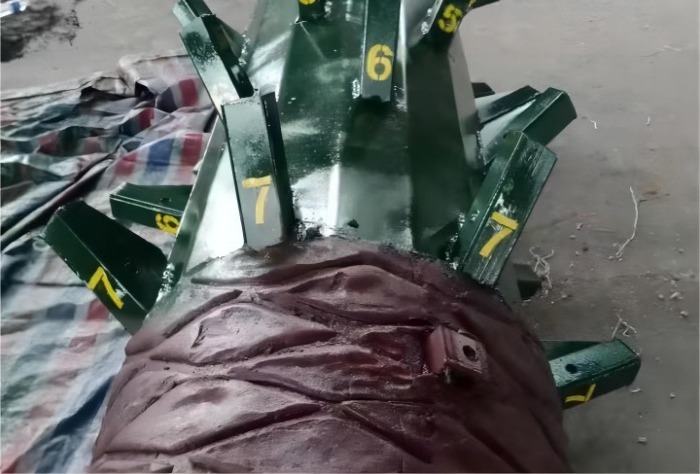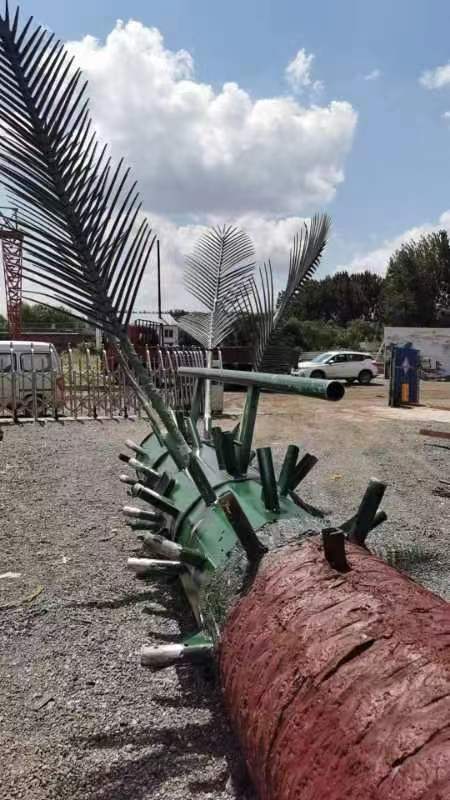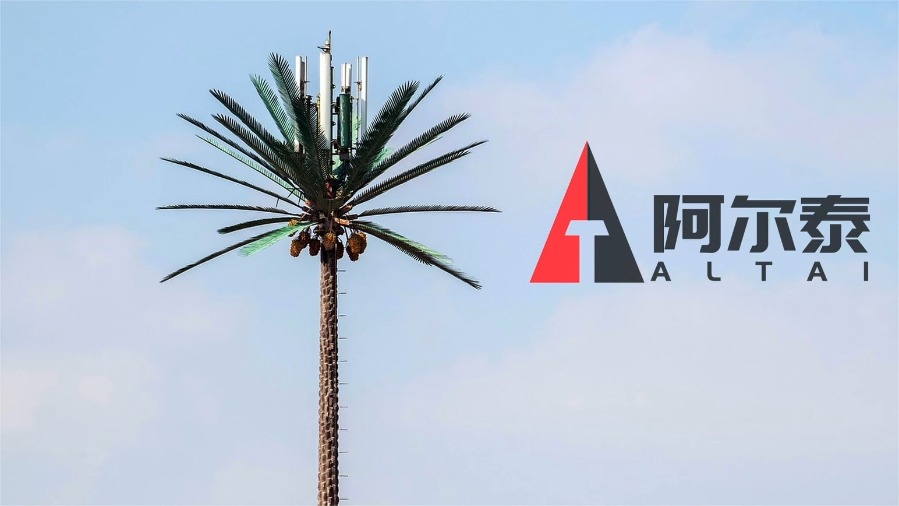For palm tree-style telecom towers in the Middle East and tropical Pacific, the bark material must balance durability, environmental resistance, camouflage realism, and low maintenance. Below is a technical evaluation of viable options:
Middle East:
Extreme heat (up to 50°C), UV radiation, sand abrasion, and occasional salt spray in coastal areas.
Low humidity but potential for thermal expansion/contraction.
Tropical Pacific:
High humidity, saltwater corrosion, frequent rain, and cyclonic winds.
Biological growth (moss, fungi) on surfaces.

Advantages:
UV-stabilized HDPE resists fading, cracking, and warping under intense sunlight.
Lightweight yet durable; withstands sand abrasion and salt corrosion.
Can be molded with realistic palm bark textures and colored to match local species (e.g., Phoenix dactylifera in the Middle East, Cocos nucifera in the Pacific).
Low maintenance—easily cleaned with water to remove dust or salt deposits.
Case Use:
Widely adopted in Dubai for camouflaged towers mimicking date palms.
Advantages:
Superior strength-to-weight ratio, ideal for cyclone-prone Pacific islands.
Customizable surface finishes (e.g., rough bark texture) using gel coatings.
Non-porous surface inhibits mold and algae growth in humid climates.
Fire-retardant variants available for compliance with regional safety codes.
Case Use:
Deployed in Hawaii and Southeast Asia for storm-resistant faux palm structures.
Advantages:
Eco-friendly option combining wood fibers and polymers.
Mimics natural wood grain while resisting rot, termites, and moisture.
Suitable for blending with tropical environments where organic textures are critical.
Limitations:
Less UV-resistant than HDPE/FRP; requires periodic recoating in high-sun regions.

Surface Treatment:
Apply anti-graffiti coatings (Middle East urban areas) and hydrophobic layers (Pacific rainforests) to reduce staining and water absorption.
Color Matching:
Use mineral-based pigments (e.g., iron oxides) to replicate regional palm species and prevent fading.
Structural Integration:
Embed cooling vents or heat-dissipating designs within the bark to mitigate internal equipment overheating in hot climates.
|
Material |
Durability (Years) |
Maintenance Frequency |
Aesthetic Realism |
Cost (USD/m²) |
|
HDPE |
15–20 |
Low |
High |
80–80–120 |
|
FRP |
20–25 |
Very Low |
Moderate-High |
150–150–200 |
|
Wood-Plastic Composite |
10–15 |
Moderate |
High |
60–60–90 |
--For long-term performance in both regions:
Middle East: Prioritize UV-resistant HDPE with sand-deflective textures.
Tropical Pacific: Opt for FRP with anti-biological coatings to combat humidity and salt.
--For budget-conscious projects: Use WPC with annual protective recoating.
Example Application:
A tower in Qatar could use HDPE bark colored to mimic date palms, while a Fiji installation might use FRP with embedded salt-neutralizing agents.
This approach ensures telecom infrastructure remains stealthy, durable, and harmonized with local ecosystems.
Learn more at www.alttower.com
